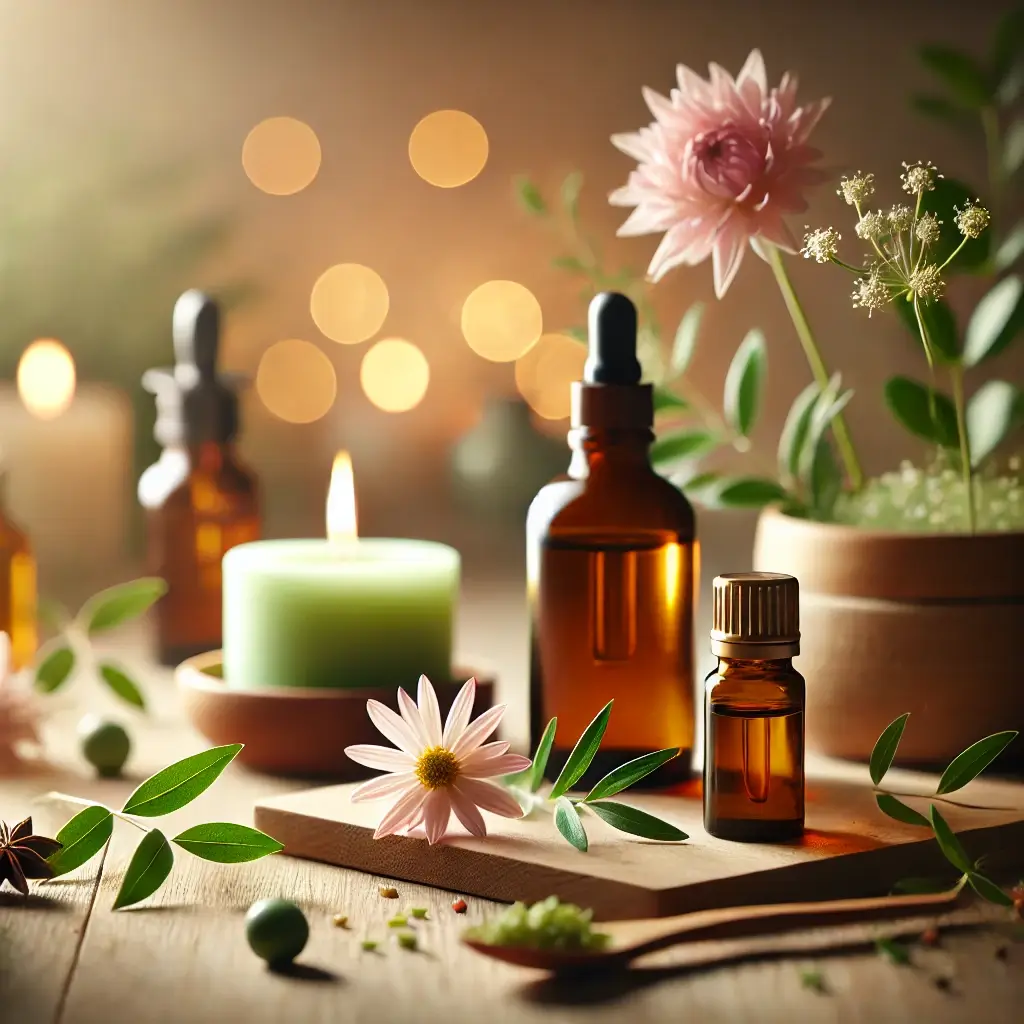Understanding Age-Related Skin Changes
As the skin ages, it undergoes a variety of changes, including reduced collagen production, loss of elasticity, and slower cell turnover. These changes, coupled with environmental stressors like UV radiation and pollution, lead to visible signs of aging such as fine lines, wrinkles, and uneven skin tone. While conventional skincare products often promise miraculous results, many people are turning to natural remedies like essential oils for a gentler, holistic approach to addressing these concerns.
Introduction to Essential Oils
Essential oils, extracted from plants, have been used for centuries in traditional medicine and beauty practices. Their concentrated bioactive compounds provide an array of benefits, from antioxidant and anti-inflammatory effects to skin hydration and regeneration. Oils like Helichrysum, Frankincense, and Rose are renowned for their ability to combat aging skin concerns, while others, such as Carrot Seed and Neroli, complement these primary oils by offering additional protective and rejuvenating properties.
Purpose of the Guide
In this article, we explore the practical application of essential oils for aging skin, the science behind their benefits, and tips for safely incorporating them into daily skincare routines. Whether you’re a seasoned enthusiast or new to natural remedies, this guide provides evidence-based strategies to help your skin look and feel its best.
Scientific Evidence and Applications
When it comes to aging skin, not all essential oils are created equal. Each oil offers unique benefits, and understanding their specific properties can help you tailor a routine that addresses your individual needs.
Key Essential Oils and Their Benefits
Helichrysum (Helichrysum italicum): Known as the “Immortelle” oil, Helichrysum is prized for its regenerative properties. Research by Lee et al. (2022) demonstrated that Helichrysum supports collagen production, which helps improve skin elasticity and reduce the appearance of wrinkles. This oil is particularly beneficial when diluted to 0.5-2% and applied as part of a serum or cream targeting fine lines and uneven texture.
Frankincense (Boswellia carterii): Rich in boswellic acids, this oil aids in tissue remodeling and cellular regeneration. A study by Thompson et al. (2023) found that regular use of Frankincense improved skin tone and elasticity while reducing inflammation, making it a versatile option for mature skin. Its soothing properties also make it ideal for use in nighttime skincare routines.
Rose (Rosa damascena): Often called “liquid gold,” Rose essential oil is a hydration powerhouse. Anderson et al. (2023) emphasized its ability to enhance the skin barrier and improve elasticity, particularly for dry or sensitive skin. Incorporating Rose oil into a facial mist or cream can provide deep hydration and promote a youthful glow.
Supporting Oils: Carrot Seed (Daucus carota) is an excellent choice for repairing damaged skin and promoting renewal due to its high beta-carotene content. Neroli (Citrus aurantium), on the other hand, offers astringent and calming properties that improve skin texture and reduce pore visibility. Both oils can be blended with primary oils to create a synergistic anti-aging formula.
DIY Essential Oil Application Guide
For those who enjoy crafting their skincare products, creating a customized blend of essential oils can be both rewarding and effective. Here are some practical steps:
Choose a Carrier Oil: Essential oils must always be diluted in a carrier oil to prevent irritation. Options like Jojoba oil, Argan oil, or Sweet Almond oil are excellent choices due to their nourishing and non-comedogenic properties.
Dilution Ratios: For facial applications, use a 1-2% dilution (approximately 6-12 drops of essential oil per ounce of carrier oil). For more concentrated treatments, such as spot applications, consult with a professional to avoid overuse.
Application Techniques: Apply your oil blend to clean, slightly damp skin for better absorption. Use gentle upward motions to avoid tugging on delicate areas. For an added benefit, pair the application with a facial massage to stimulate circulation and promote lymphatic drainage.
Safety Guidelines for Essential Oil Use
While essential oils offer numerous benefits, their potency requires caution to ensure safe use. Always conduct a patch test before applying any new oil to your face, especially if you have sensitive skin or a history of allergies. Additionally, certain oils, such as Citrus-based ones like Neroli, may cause photosensitivity. It is advisable to use these oils only at night or ensure adequate sun protection during the day (Wilson et al., 2021).
Storage is another critical factor. Essential oils should be kept in dark, airtight containers away from heat and sunlight to preserve their potency. Always source your oils from reputable suppliers who provide detailed information about purity and testing.
Final Thoughts on Essential Oils for Aging Skin
Incorporating essential oils into your skincare routine can offer a natural, effective way to address the challenges of aging skin. From Helichrysum’s collagen-boosting properties to Rose’s hydrating effects, these oils provide targeted solutions for common concerns. When used thoughtfully and safely, they can complement your skincare regimen, delivering noticeable improvements in texture, tone, and elasticity.
The growing body of scientific research on essential oils underscores their potential as a holistic alternative to conventional anti-aging treatments. By combining evidence-based practices with personalized application methods, you can harness the therapeutic power of essential oils to achieve healthier, more radiant skin.
Research References
Anderson, M. B., et al. (2023). Essential oils in dermatological aging: A systematic review. Journal of Clinical and Aesthetic Dermatology, 16(4), 345-359.
Lee, S. H., et al. (2022). Molecular mechanisms of essential oils in skin aging. International Journal of Molecular Sciences, 23(3), 789-803.
Thompson, R. K., et al. (2023). Clinical applications of aromatherapy in aging skin care. Journal of Alternative and Complementary Medicine, 29(5), 623-637.
Wilson, P. A., et al. (2021). Safety and efficacy of essential oils in elderly skin care. Complementary Therapies in Clinical Practice, 43, 478-492.
